Tamiya's 1/48 scale
GMC CCKW 2 ½ Ton Airfield Truck
by Roland Sachsenhofer
|
GMC CCKW 2 ½ Ton Airfield Truck |

Sometimes it has its advantages not to be an expert in a certain field- which for me is irrefutably true with regard to trucks This statement recently proved true for me when I built this GMC tanker: on the one hand, looking at the unknown arouses curiosity and allows new perspectives by leaving the beaten track. On the other hand, it sometimes gives the opportunity to stand in amazement in front of facts that one simply did not know before. In any case, dealing with the "GMC 2-1/2 ton Fuel Truck" taught me a lot of new things - and that can be reward enough. What do I remember most about it?
About the original: GMC CCKW 2 ½ Ton Airfield Truck
Firstly, it is the sheer quantity of units produced of this vehicle: in the short period from 1941 to 45, no less than 572 000 units of all variants were delivered! The "GMC 2-1/2 ton" thus makes history as one of the most built vehicles, surpassed only by another product of the hyperventilating US armament industry of those days, the "Willys Jeep". The latter can claim the lead with an estimated 648,000 units. If one compares these figures with the equally impressive data on the most-built aircraft, one quickly realises what orders of magnitude lie between them. The list is headed by the Cessna 172 with 44,000 units; the Bf 109 was delivered in about 33,000 units, while Spitfires of all variants rolled off the production line about 20,350 times.
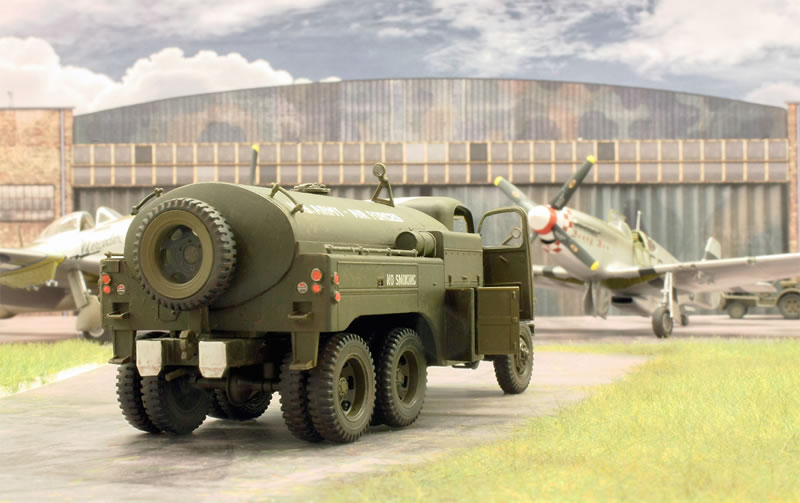
The GMC CCKW became one of the icons of the tremendous American armament potential and a ubiquitous symbol of the enormous war-economic contribution that the so rudely "awakened sleeping giant" USA made to the Allied cause, thanks to these production figures and the resulting worldwide distribution.
By the way: behind the puzzling sequence of letters CCKW in the type designation is the following statement: C= year of construction1941, C=conventional cab body, K= four-wheel drive, W= double rear axles. The "GMC CCKW 1 ½ Ton" was used in numerous variants and adaptations for the most diverse purposes. In selection are mentioned: Ambulance, Chemical Warfare/Decontamination, Fire Fighting, Bomb Disposal, Flak Truck, Maintenance/Workshop Truck, Artillery Carrier and many more.
The vehicles were produced by General Motors in the company's own "Yellow Truck and Coach Division" in Pontiac, Michigan. Later in the war, production was also set up at GM's Chevrolet plant in St. Louis, Missouri.
What was interesting to me was how relatively small these vehicles seem to have turned out. With a length of 6.86m and a width of 2.24m, the vehicle doesn't really seem like a giant as a heavy truck. More impressive for me was the unladen weight of 4 tonnes, with a maximum load of 7400kg. Since the vehicle presented here is a tanker, the capacity of the semi-mounted tank should also be mentioned: it held 2800 litres of fuel. These vehicles were powered by 6-cylinder engines of the GMC 270 series. These reliable engines produced around 100 hp, enough to accelerate the GMC CCKW to a good 70 km/h - assuming the best road conditions!
A special feature of this GMC CCKW tanker was the fuel feed pump driven by the vehicle's engine. In combination with the other advantages of this truck, this made it an extremely effective support vehicle on the airfield. Accordingly, the "2 ½ Ton Fuel Truck" was widely used by the US Armed Forces and could be found at literally all US Air Force operating locations. Due to its ability to follow the advancing front lines under its own power, this vehicle was also available at the forward operating bases and provisional airfields after the Normandy landings. Of course, the tanker was not only used in Europe, but could also be found in all theatres around the world during the entire course of the war.
Hundreds and hundreds of these popular and well-known tankers - as well as their less specialised truck brothers - were left at their respective locations after the war to be sold and put to peaceful further use. The USAAF, or USAF, continued to use the GMC 2 ½ Ton" tanker beyond the end of the Korean War.
With the contents of the box Tamiya prepares in a proven way the basis for a problem-free and comfortable building pleasure: the accuracy of fit is impressive, the quality of the injection moulding without blemish and the building instructions lead in clearly structured building steps even a vehicle beginner like me comfortably through the building process.
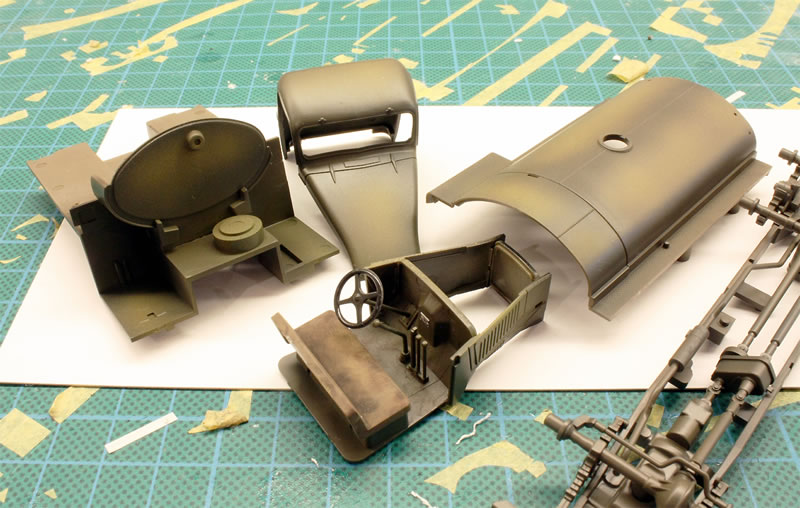
I would also like to praise the decals included. They are wonderful to work with and, with the appropriate preparation and finishing, give a credible "painted" appearance.
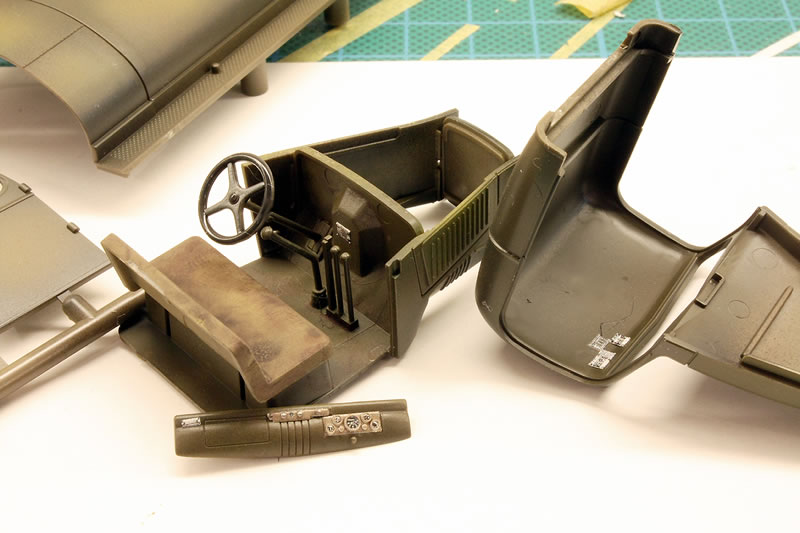
I wanted to invest the energy saved on all these qualities in a little extra effort on the appearance of the model! To loosen up and liven up the uniform olive drab of the vehicle a bit, I prepared a multi-level coloured base in the following way: the individual layers of different coloured variants of Gunze H-52 were each separated with dabbed-on Maskol.
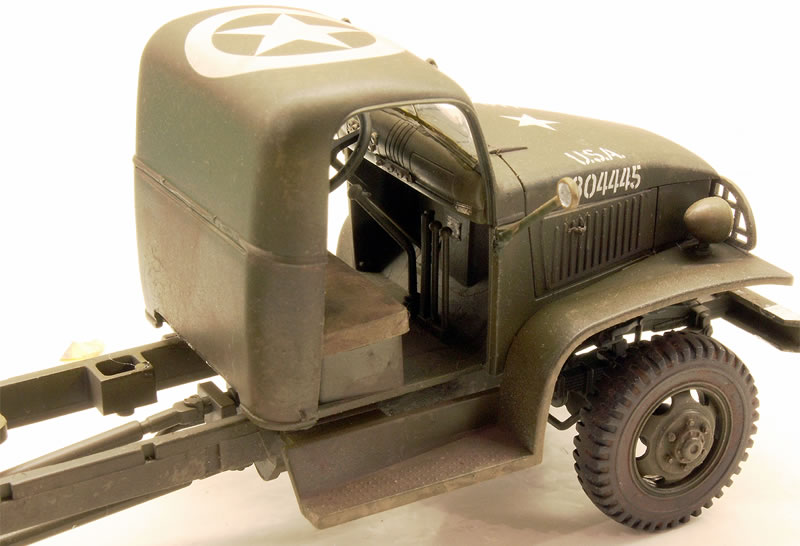
Rubbing this off after the paint has dried reveals the layer of paint underneath. You can repeat this as often as you like until you are satisfied with the colour vibrancy of the surface.
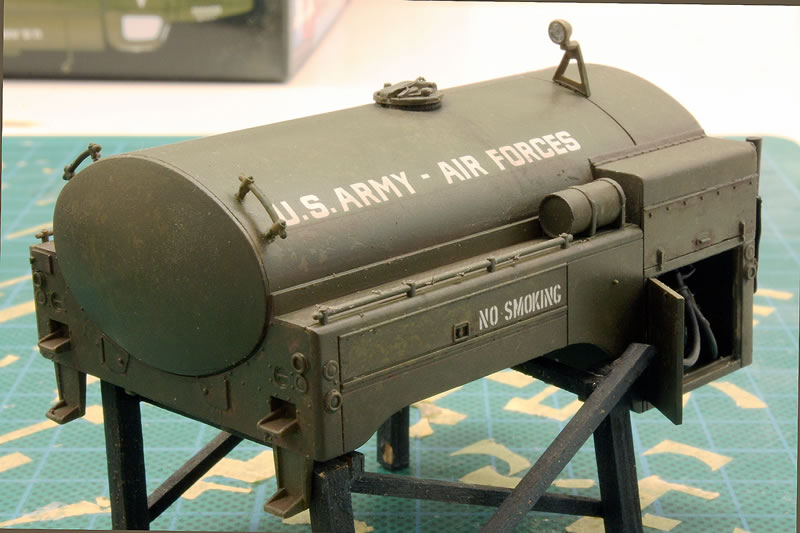
A special feature of this model is the use of 3D decals from the manufacturer Quinta. These can be found on the dashboard and as maintenance indications in the cabin as well as prominent red "position lamps" on the corners of the tanker body.
With this build, as described at the beginning, I ventured into unknown territory and got what one likes to expect from an excursion: some variety, fresh air and a few interesting changes of perspective! In any case, the US tanker will find itself as a mute extra on one or the other picture of a completed aircraft model in the future!
If you are interested in the building process, please have a look here on Scalemates:
https://www.scalemates.com/profiles/mate.php?id=10148&p=albums&album=89709
As ever, remarks will be appreciated:
ro.sachsenhofer@gmx.at
Model, Images and Text Copyright ©
2023 by Roland Sachsenhofer
Page Created 18 April, 2023
Last Updated
18 April, 2023
Back to HyperScale Main Page

|
Home
| What's New | Features | Gallery | Reviews | Reference | Resource Guides | Forum |